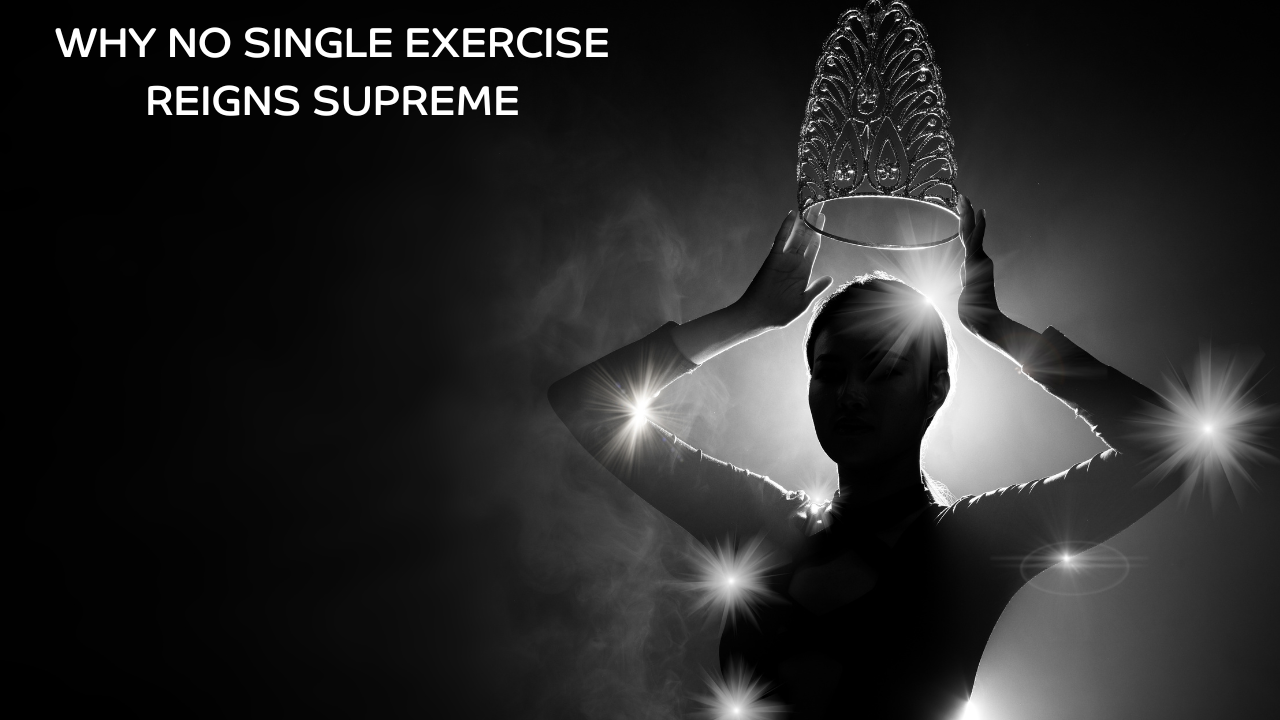Menopause Fitness Moment: Why No Single Exercise Reigns Supreme
Aug 25, 2023
Ah, the world of exercise – a labyrinth we navigate for the promise of well-being. But hold on tight because we often find ourselves on a seesaw of choices, giving different exercises distinct levels of importance. We have been sold the idea that certain activities are "better" than others and that if we want to be healthy, we must do those activities. This is simply not true. All movement counts, and there is no one right way to exercise. But even with that knowledge, we still tend to fall prey to it. I’ll be the first to admit to this. I confess that often, I’m that person who'd pick up a barbell even if my body is telling me that some recovery work would be better. It's like I've got this magnetic pull toward resistance training, and I know why: it’s my favorite mental escape. It is often the only thing that will lift my mood and help my brain take a break. All of that is great but not to the detriment of my body, especially during menopause, and that is something I’ve had to learn (and it’s been quite challenging).
The Hierarchy of Exercise Values
The varying values assigned to different types of exercise can be attributed to a range of factors, including societal norms, personal preferences, and the influence of media. High-intensity workouts such as weightlifting, running, and intense cardio are often glorified for their immediate and visible impact on physical appearance. These exercises are perceived as efficient ways to burn calories, build muscle, and achieve aesthetic goals. They are being sold as the fancy unicorns of the exercise realm, leading them to be placed on a pedestal in the hierarchy of exercise values. Especially during menopause, the narrative is now that only high-intensity exercise will give you the results you want, and although it has its merits, and I'm a huge fan of it, it is not the end-all-be-all of exercises. Most importantly, it may not be something you like or your body can tolerate.

On the other hand, exercises that prioritize recovery, flexibility, and balance, such as yoga, Pilates, and meditation, tend to receive less recognition. These activities are commonly associated with holistic health benefits but are often overlooked due to their subtler, less quantifiable outcomes. Consequently, this hierarchy of exercise values can lead us to believe that only high-intensity workouts hold significance, neglecting the broader spectrum of health that other forms of exercise offer.
Consequences of an Imbalanced Approach
Favoring high-intensity exercises at the expense of other forms can have detrimental effects on both physical and mental well-being. Over time, an unbalanced exercise routine can lead to burnout, injuries, and a strained relationship with fitness. Pushing the body relentlessly without incorporating restorative activities like stretching or mindfulness can increase the risk of injuries and neglecting the mental and emotional benefits of low-intensity exercises can result in elevated stress levels, anxiety, and a feeling of disconnection from one's own body. I reached that point of imbalance quite a few years ago as I kept pushing my body way beyond its limits. I favored high-intensity exercise so much that I didn’t do anything else, and my body started falling apart. My pain levels reached an all-time high and I had to have a heart-to-heart with myself to evaluate what to do. The dilemma was and still is that for me, higher-intensity exercise has always been my happy place. Fast and furious before anything, but my body does not appreciate it quite as much anymore, so what to do? Try to strike a balance. For me, it has meant aiming for more recovery work.
Striking a Balanced Approach
Achieving a well-rounded approach to exercise involves recognizing the value of a diverse range of activities. There are many different types of exercise, and each one has its own benefits. Some activities are better for cardiovascular health, while others are better for strength training. Some activities are more challenging than others, and some are more social. All movement contributes to overall well-being and should be celebrated. Whether it's jogging, swimming, cycling, yoga, or any other activity, each form of exercise offers unique benefits and can be tailored to your individual preferences and needs. The key lies in finding activities that bring joy, fulfillment, and sustainability. The notion that there is one right way to exercise is both limiting and detrimental to our physical and mental well-being. By embracing the idea that all movement counts, we are empowered to redefine our relationship with exercise.
For me finding that balance includes incorporating regular yoga and mobility days to help me manage pain, which is a very big part of my life but, until recently, have neglected. I admit that striking that balance can be very challenging, but it is well worth the effort. Do you have any activities that you prefer over all others and struggle with incorporating other forms that you know would be beneficial for you? I’d love to hear. Email me at [email protected]



